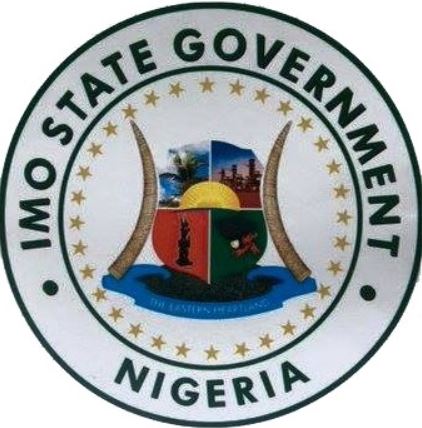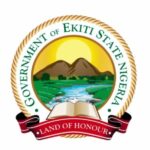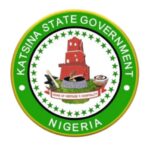Imo State, located in the South-East of Nigeria, is bordered by Anambra, Rivers, and Abia states. It is named after the Imo River, which runs along its eastern side.
The capital of the state is Owerri, and its slogan is “Eastern Heartland.” Imo is Nigeria’s third smallest state by size but ranks 14th in population, with over 5.4 million people as of 2022.
The state is home to the Igbo people and has been inhabited for nearly a thousand years. Its economy depends on agriculture, especially palm oil production, along with crude oil and natural gas extraction.
READ ALSO: Complete List Of Local Government Areas In Bauchi State And Their Chairmen
List Of Local Government Areas In Imo State And Their Chairmen
Imo state has twenty-seven local governments area, and their chairman:
- Aboh Mbaise — Barr. Alaribe Iheukwumere
- Ahiazu Mbaise — Hon. Larry Chikwe
- Ezinihitte Mbaise — Hon. Chinedu Nwachukwu
- Ngor Okpala — Hon. Mrs. Chika Ibekwe
- Mbaitoli — Hon. Ihunanya Nwanegbo
- Ikeduru — Hon. Justice Nze
- Owerri Municipal — Hon. Chidiebere Christian Emeribe
- Owerri North — Hon. Lucky Abaraonye
- Owerri West — Hon. Osigwe Victor
- Ehime Mbano — Chief Uche Nwosu
- Isiala Mbano — Hon. Israel Chika Okoroike
- Ihitte-Uboma — Hon. Prince Obioha Ndukwe
- Obowo — Hon. Obioma Ezirim Johnson
- Okigwe — Hon. Mrs. Nkechi Mbonu
- Onuimo — Hon. Dr. Emeka Obi
- Ideato North — Hon. Arch. Chinonso Okparaeke
- Ideato South — Hon. Okechukwu Okwara
- Isu — Hon. Kenneth Ukah
- Njaba — Hon. Chief Vitalis Ugo Obi
- Nkwerre — Hon. Maris Chukwunyere
- Nwangele — Hon. Chief Paul Duru
- Oguta — Hon. Ifeanyi Nani
- Ohaji-Egbema — Hon. Marcel Amadioha
- Orlu — Hon. Christian Okechukwu Mbarie
- Orsu — Hon. Friday Ebeneme
- Oru East — Hon. Nnamdi Oparaigwe
- Oru West — Hon. Engr. Ikenna Adikaibe
Which LGA Is The Largest In Imo State By Land Mass?
Ngor Okpala is the largest local government area in Imo State, Nigeria by landmass, with an area of 561 km2. While it is widely known as the biggest LGA in the state geographically, it is also considered one of the most populated.
Its headquarters is located in the town of Umuneke Ngor, and the area connects Imo State to neighboring Abia and Rivers states.
This strategic location makes it a busy and significant area, contributing to its high population. Ngor Okpala is home to many communities.
Some of the well-known communities are Egelu Nguru, Umuowa, Obiangwu, Ntu, Alulu, Amala, Ikem, Oburu, Obokwe, Eziama, Ohekelem, Nnorie, and Umuhu.
There are also communities like Ihite-Okwe, Obike, Elelem, Umuohiagu, Imerienwe, Nguru-Umuaro, Orishieze, and Ama-asaa.
Other areas such as Umuekwune, Logara, Umukabia-Ogodo, and others further contribute to the population density of this LGA.
The town of Okpala, located within Ama-Asaa, is central to the area and is surrounded by villages such as Amankwu, Amaube, Umuokereke, and Umuodah. These numerous communities collectively make Ngor Okpala not just the largest by land but also highly populated.
The presence of the Imo Airport, officially known as Sam Mbakwe International Cargo Airport, in Ngor Okpala significantly boosts human activities and economic growth in the area.
This airport attracts travelers and workers. Education also thrives in Ngor Okpala, with institutions like the Secondary Commercial School being a center of learning for young people in the area.
Which LGA Is The Most Populated In Imo State?
The most populated Local Government Area (LGA) in Imo State, Nigeria, is Aboh Mbaise, with a population of approximately 272,700 as of 2025 population projection.
Aboh Mbaise is known for its rich cultural heritage and historical significance. It is one of the prominent LGAs in the state and plays a part in the local traditions and activities of the people.
Aboh Mbaise is located in the southeastern part of Nigeria, with its headquarters in the town of Aboh. It covers an area of about 184 square kilometers.
Based on the 2006 census, the population of Aboh Mbaise was recorded at 194,779, but with continuous growth and development over the years, the population has increased significantly, now estimated at 272,700.
This makes it the most populated LGA in Imo State. The LGA consists of several towns, including Nguru, Uvuru, Mbutu, Okwuato, Lorji, Amuzu, and Enyiogugu.
These towns are not only known for their population size but also for their unique cultural and traditional practices. One of the most notable cultural festivals in Aboh Mbaise is the Itu Aka Nguru Uboma Ahia Ise, which is celebrated every February in Nguru town.
This festival, established in the agricultural history of the community, is the beginning of the farming season. It involves traditional ceremonies where elders and priests offer sacrifices and point out specific areas for farming.
The celebration includes several stages, such as the Ike Aka, Egwu Onwa, and the final grand event, the Itu Aka Ceremony.
READ ALSO: Complete List Of Local Government Areas In Ekiti State And Their Chairmen
Which LGA In Imo State Produces Oil?
Imo State is known for its oil production, particularly in two Local Government Areas (LGAs): Ohaji/Egbema and Oguta.
These areas are very important for the oil industry in the state and have played a big part in contributing to both the state’s and Nigeria’s economy. Ohaji/Egbema is one of the key oil-producing areas in Imo State.
Its headquarters is located in Mmahu-Egbema.This region has a history of oil exploration, which started in the 1950s when the first oil well was discovered at Iho Dimeze. Although the oil well did not produce much commercially at the time.
Ohaji/Egbema officially became a separate LGA in 1991. However, It is made up of several communities like Egbema, Umuagwo, and Awarra, which are directly affected by oil production activities.
In recent years, there has been an increase in oil production, including the recovery of 18 oil wells. Oguta is another LGA for oil production in Imo State.
It shares borders with Ohaji/Egbema and has also been actively involved in oil exploration. Communities in Oguta have benefited from projects, improving infrastructure and living conditions, funded by the revenue from oil production.
Both Oguta and Ohaji/Egbema are part of the larger Niger Delta region, which is recognized for its rich oil deposits. The oil in these LGAs has boosted economic activities and attracted investments in infrastructure and community development.




Information good